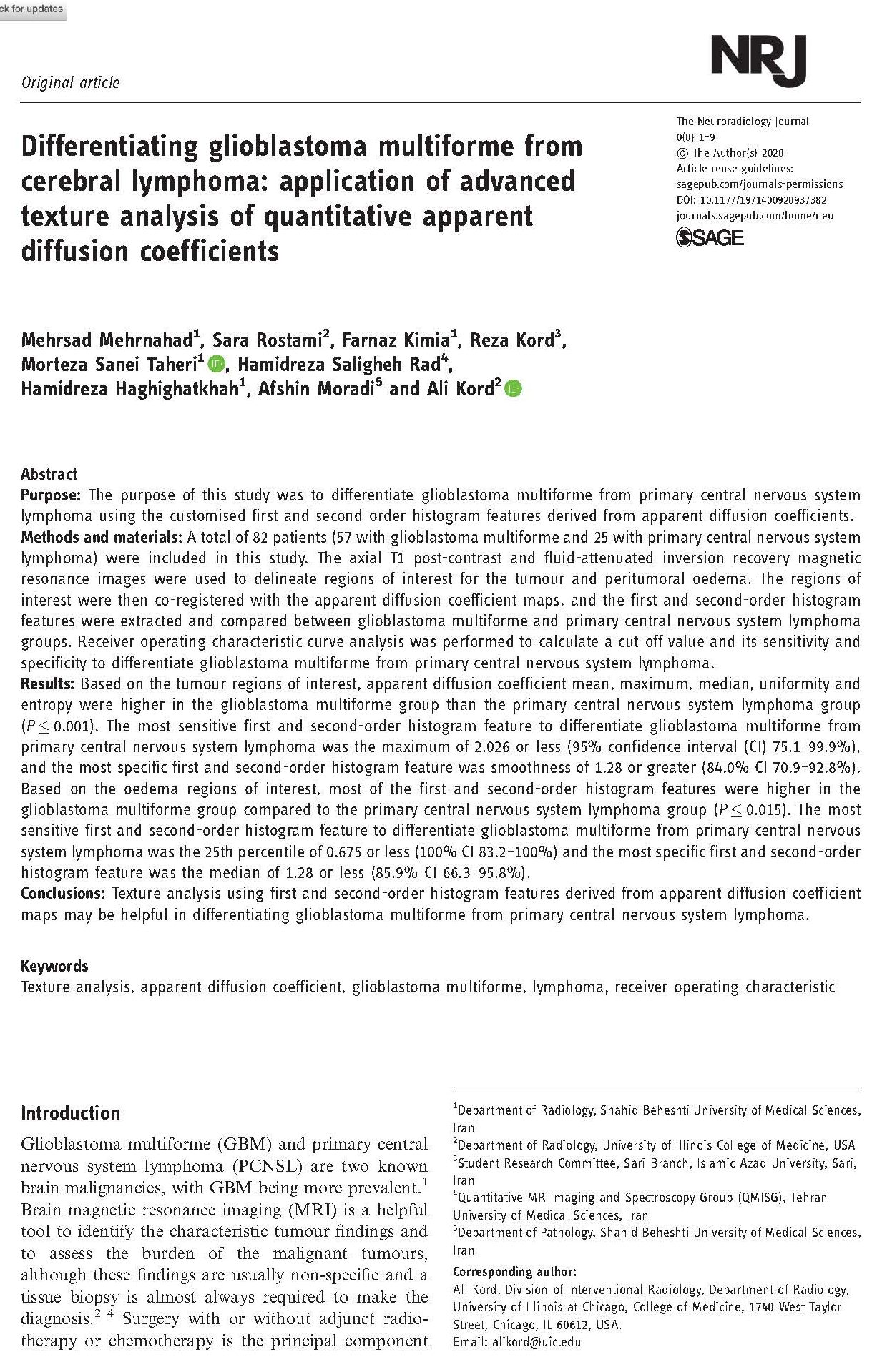Differentiating glioblastoma multiforme from cerebral lymphoma: application of advanced texture analysis of quantitative apparent diffusion coefficients
Abstract
Purpose:
The purpose of this study was to differentiate glioblastoma multiforme from primary central nervous system lymphoma using the customised first and second-order histogram features derived from apparent diffusion coefficients.
Methods and materials:
A total of 82 patients (57 with glioblastoma multiforme and 25 with primary central nervous system lymphoma) were included in this study. The axial T1 post-contrast and fluid-attenuated inversion recovery magnetic resonance images were used to delineate regions of interest for the tumour and peritumoral oedema. The regions of interest were then co-registered with the apparent diffusion coefficient maps, and the first and second-order histogram features were extracted and compared between glioblastoma multiforme and primary central nervous system lymphoma groups. Receiver operating characteristic curve analysis was performed to calculate a cut-off value and its sensitivity and specificity to differentiate glioblastoma multiforme from primary central nervous system lymphoma.
Results:
Based on the tumour regions of interest, apparent diffusion coefficient mean, maximum, median, uniformity and entropy were higher in the glioblastoma multiforme group than the primary central nervous system lymphoma group (P?≤?0.001). The most sensitive first and second-order histogram feature to differentiate glioblastoma multiforme from primary central nervous system lymphoma was the maximum of 2.026 or less (95% confidence interval (CI) 75.1?99.9%), and the most specific first and second-order histogram feature was smoothness of 1.28 or greater (84.0% CI 70.9?92.8%). Based on the oedema regions of interest, most of the first and second-order histogram features were higher in the glioblastoma multiforme group compared to the primary central nervous system lymphoma group (P?≤?0.015). The most sensitive first and second-order histogram feature to differentiate glioblastoma multiforme from primary central nervous system lymphoma was the 25th percentile of 0.675 or less (100% CI 83.2?100%) and the most specific first and second-order histogram feature was the median of 1.28 or less (85.9% CI 66.3?95.8%).
Conclusions:
Texture analysis using first and second-order histogram features derived from apparent diffusion coefficient maps may be helpful in differentiating glioblastoma multiforme from primary central nervous system lymphoma.

